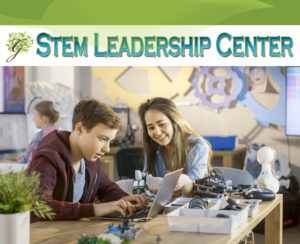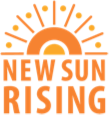Your mission: To design an unmanned aerial search vehicle to locate a scout lost in the two mile radius of the Philmont recreation area. That was the challenge given to hundreds of teams across the country. I had a chance to sit down with the 2nd place national winners, the CCA Innovators, and learn more about this incredible challenge. The seven high school students attend Commonwealth Connections Academy, a cyber school in Pennsylvania.
This was Courtney Thurston’s second year on the team. She is a sophomore who served as the team’s technical writer and researcher motivated by her goals of becoming a systems engineer. “This type of long term project teaches you a lot more, more about project management and skills that cannot be exercised in a short term project. It is really beautiful to see it all come together, nine months of work. You don’t get to experience this often, kind of like a baby to be proud of!” The technical writing of the project came together in a 78 page report. The first part of the report addressed how the team was formed, acquired mentors, set-up and mastered the technical tools, and set their immediate project goal within its larger framework to impact STEM education.
Rick Ciora, a junior planning to study chemical engineering, was a third year veteran. He talked about the software they used to select and test the various possible configurations of wing and tail geometries, propulsion systems, fuselage layouts, structural designs, sensor payloads and telemetry selections. The team spent time before the competition started mastering Creo Elements, a 3D CAD software used by professional engineers. “This is the most realistic experience I’ve ever had. All the problems come up last minute in real life, even with the software. Iterations continue as you keep trying to improve. There is always stuff you can change to make it better, you just need time. You can spend years changing minor details.”
One senior was new to the Real World Design Challenge Team. Alexis Amelotte was able to add her literary skill to make the report and presentation clear, concise and professional. “The whole experience has been so enlightening about how much is involved in this process. I don’t think I’m cut out for engineering.” What she did gain in the process, and the skill that will stick with her as she continues her education and prepares to become a pediatric oncological surgeon, was “ connecting with so many exceptional people, seeing them in action and working alongside them.”
Ian Cavanaugh, a freshman and neophyte to the RWDC team, held firm to the advice of senior and 4th year veteran, Athena Kao. Athena assured him that she, too, found the software and mathematics involved very difficult to learn. She suggested patience, to keep on trying, watch the video tutorials, and to remember that little things matter a lot. Ian commented, “It was great to be on a team with so many people who knew what they were doing. I am just beginning to learn the software and read through their reports over and over until I finally saw how the pieces came together.”
Athena finds the design and mission planning the most interesting part of RWDC. Just a few slides from their presentation give you a glimpse of the depth of research and testing that went into each design element of the two UAVs the team eventually proposed.
The slides merely summarize the research and proposal of sensors attached to their UAVs. Other slides illustrate the fuselage, electrical drive motors, and airfoils (which included Searching the UIUC Database, experimenting in JavaFoil, and verifying the performance in MathCad).
Athena’s favorite part of the RWDC competition is the mission planning. The design must serve the mission, and the mission is affected by the design. The choice of 3 UAVs with two different designs enabled the team to divide the mission to search for the lost scout by creating a search grid that took into account the geography, the mathematical calculations of sensor scanning widths, and engine stall speeds. Athena’s attention to detail is seen in each calculation. The team will miss her as she blazes new paths in software engineering.
Helping with the mathematical calculations was teammate Jacob Antonio, a sophomore in his 2nd year of RWDC participation.
The final piece of the competition is a business plan. Devin Slaugenhaupt recruited the help of a family friend and college business professor to learn the elements of a good business plan. His goals include attending West Point after graduating next year. This junior served his second year on the team and was key in identifying targeted commercial applications, calculating amortized system costs, and market assessment. Devin spoke of “learning how to look at stuff from other people’s perspective (engineers butted heads with business).” He expressed the attitude that took this team to nationals, “You have to be really dedicated. It is not something you can spend just a little bit of time in. Many of the team members and I suffered lack of sleep, stayed up until 3 am.” He appreciates working with others who are serious about the challenge, know what they are getting into, and act professional.
Real World Design Challenge is a truly comprehensive and engaging project based learning opportunity. Bob Camp, one of the team mentors (and husband of the phenomenal CCA teacher and lead coach Ann Camp), advises potential mentors and coaches to take the leap and invest the time in project like RWDC. “We need to give kids some kind of exposure to real world engineering at this level. They are going to be making career choices very quickly. Without that exposure, they have nothing to base that decision on. It is such a profoundly significant decision.“
Programs like this push students to study, focus, teach themselves and do far more learning on their own. There is no template, no fill in the blanks. They have to go off and learn on their own – a skill integral to any career. Innovation, STEM skills, collaboration, resilience skills all emerged from every team competing!







3 comments
1 pings
Ellen—-Wpw, what a challenge to a bunch of, what my generation would call KIDS and they are really mature young engineers—very impressive group —congrats Ellen and you KIDS—Don
Ellen—-Wow!! What a challenge to a bunchof, what my generation would call KIDS and they turn out to be a bunch of mature young engineers—very impressive group——congrats Ellen annd you KIDS—Don
Dr Coppola completely failed to provider recognition to the 2015 RWDC winning teams. My son’s team came in third place on the national finals. After we received and heard literally nothing from RWDC I started to complain. After months of email exchange we received a simple letter with a SCANNED signature of Dr. Coppola. Completely useless as an official document! I am sad and angry that my son was let down by Dr Coppola.
[…] Real World Design Challenge […]